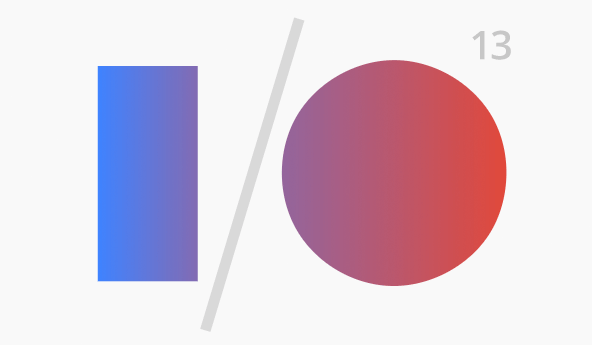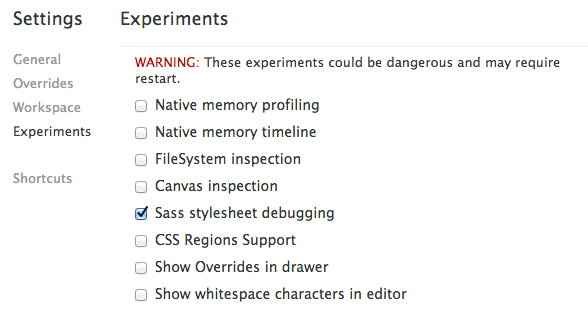3 Google I/O 2013 technologies that I'm super interested in, but will probably never use
Reading time: ~ 2 minutes

So, I didn’t technically attend Google I/O 2013, this year’s iteration of the company’s developer conference; I didn’t receive a free Chromebook Pixel and I definitely didn’t sit through the 3.5-hour keynote. But I did watch a bunch of the session videos when I was likely supposed to be doing something else, like laundry or, you know, working. There were hundreds of talks over the course of the 3 days, with topics including Android, Chrome & Apps, Maps, and YouTube, and the majority of them are posted on the Google Developers YouTube channel. In comparison to last year’s flashy introductions (Google Glass, a new Android OS, the Nexus 7 tablet), the 2013 I/O was less relevant to the typical consumer. But I found this year’s focus on developers and their tools quite interesting; in particular, there were a few announcements that really caught my attention.
Sass Preprocessor Support
In his Chrome DevTools Revolutions 2013 talk, Paul Irish mentioned a number of neat additions to the the browser’s Developer Tools; this includes Workspaces (which allows one to edit local projects within Chrome), mobile debugging tools, and Sass preprocessor support. We started using Sass about 2 years ago and, since then, we’ve only become more devoted to the language. Now, thanks to Workspaces and Sass source map support, which links authored Sass to its compiled CSS, we are able to both see our .sass/.scss files and edit them within Dev Tools. This is currently an experimental feature in Chrome Canary, but soon enough this functionality will find its way into the Chrome stable channel.

Apps Script and Google Docs
Google’s Javascript cloud scripting language, called Apps Script, can be embedded in Spreadsheets and Sites, can manipulate Calendar and Gmail, and can also be used to build standalone apps. And at last week’s Google I/O, Google announced that Apps Script is now integrated into Google Docs and Google Forms as well. In Extend Google Docs with Apps Script, two awkward software engineers introduced an app that they built using Apps Script to extend Google Docs’ UI with a custom sidebar, buttons, and menu items, as well as manipulate the contents of the document. Similarly, in their Use Apps Script to Create Dynamic Google Forms talk, a different pair of gawky Google developers described the three ways in which Apps Script have been integrated into Forms; namely, one can now programmatically create/open/edit Forms, enhance the Form designer, and react to submissions. After chewing on my thumb for a few minutes, I can still think of absolutely no uses for Apps Script; however, I’m damned excited to use it…for something…eventually?
Chrome Packaged Apps
During last year’s I/O, Google introduced Packaged Apps, self-contained HTML/CSS/JS apps that are as capable and immersive as native apps, but are written using web languages. This year, in both The Chrome Packaged Apps State of the Nation and Upgrading to a Chrome Packaged App talks, Google representatives told us a bit more about Packaged Apps, which we should be seeing in the Chrome Web Store this summer. Much like PhoneGap bundles HTML/CSS/JS into native mobile apps, Chrome Packaged Apps allows web developers to write in languages they’re familiar with yet still deliver native desktop app experiences. In addition to being cross-platform, Packaged Apps are offline by default, allow access to platform capabilities and hardware (storing files, communicating via USB and bluetooth, syncing data), and are easily distributed and updated through the Chrome Web Store.
Until next year…
Although not quite as enthralling as wing suit skydives and rooftop BMX stunts, this year’s Google I/O showcased a lot of interesting technologies. Might you have some interesting schemes for Packaged Apps or Apps-Script-enabled Forms? Let us know in the comments – I promise not to steal your ideas. Last statement not legally binding.